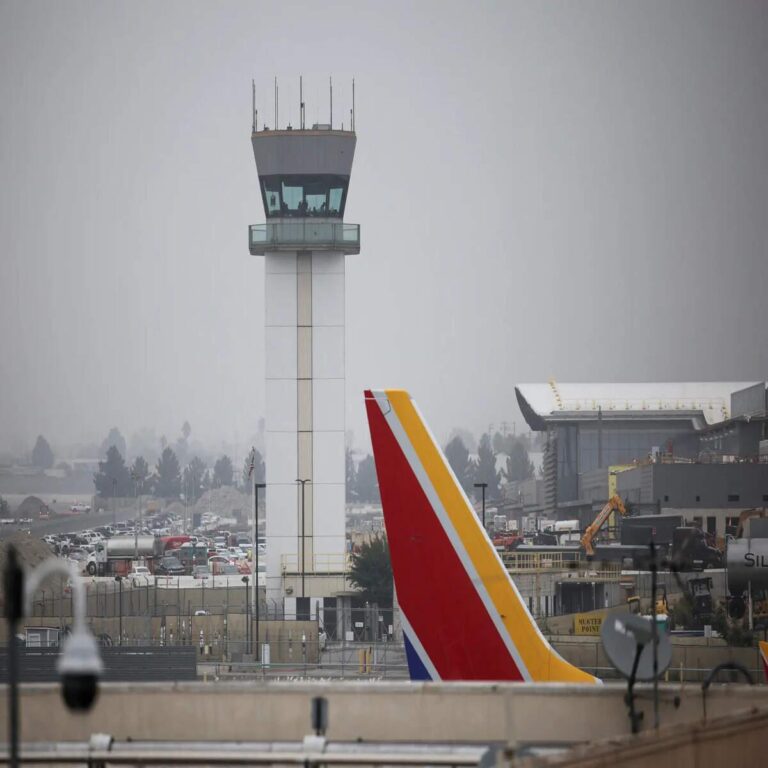Flights at several major U.S. airports faced significant delays this week due to a persistent shortage of air traffic controllers, CBS News reports. The staffing shortfall has strained the capacity of control towers across the country, leading to longer wait times on the tarmac and disrupted travel plans for thousands of passengers. Industry experts warn that unless the gap is addressed, these operational challenges could continue to affect the efficiency and safety of air travel nationwide.
Flights Delayed at Major U.S. Airports Highlight Growing Air Traffic Controller Shortage
Across the country, travelers are facing growing frustration as flight delays increase at some of the nation’s busiest airports. The root cause: a significant shortage of air traffic controllers, a critical workforce responsible for maintaining the safe and efficient flow of air traffic. This scarcity has stretched the capacities of control towers, leading to operational slowdowns and increased wait times on runways and in the skies. Airports like Atlanta’s Hartsfield-Jackson and Chicago O’Hare, known for high traffic volume, have reported the most pronounced disruptions in recent weeks.
Industry experts warn that this shortage is a symptom of broader systemic challenges, including:
- Retirement wave: A large number of experienced controllers reaching mandatory retirement age.
- Training bottlenecks: Limited capacity at controller academies delaying the onboarding of new hires.
- Workforce competition: Alternative career opportunities drawing potential candidates away from the profession.
| Airport | Avg. Flight Delays (minutes) | Controller Vacancy Rate |
|---|---|---|
| Atlanta (ATL) | 22 | 18% |
| Chicago O’Hare (ORD) | 19 | 15% |
| Los Angeles (LAX) | 16 | 12% |
Impact on Travelers and Airlines Reveals Systemic Challenges in Air Traffic Management
Travelers across numerous U.S. airports are facing significant disruptions as flight delays become increasingly common due to a persistent shortage of air traffic controllers. This staffing shortfall has caused ripples throughout daily operations, with passengers experiencing extended wait times, missed connections, and heightened uncertainty. Airlines are struggling to maintain schedules, often resorting to cancelling flights or rerouting to less congested hubs, further complicating travel plans. The impact extends beyond individual inconvenience, revealing critical weaknesses in the system’s ability to handle peak traffic volumes efficiently and safely.
The broader consequences affect both passengers and airlines in several key ways:
- Increased Operational Costs: Airlines incur higher expenses through fuel, crew overtime, and rebooking fees resulting from frequent delays and cancellations.
- Customer Dissatisfaction: Frustrated travelers face mounting stress and a loss of confidence in air travel reliability.
- Safety Concerns: Controller shortages stretch resources thin, potentially compromising the precision required for smooth airspace coordination.
| Airport | Average Delay (minutes) | Controller Vacancy Rate (%) |
|---|---|---|
| Chicago O’Hare | 38 | 15 |
| Atlanta Hartsfield | 29 | 18 |
| Los Angeles | 35 | 12 |
FAA Response and Staffing Initiatives Aim to Alleviate Delays and Improve Safety
The Federal Aviation Administration (FAA) has launched a multi-pronged effort to mitigate the impact of the current air traffic controller shortage affecting U.S. airports. This initiative includes strategic recruitment campaigns, enhanced training programs, and a reevaluation of staffing allocations to ensure critical hubs are adequately supported during peak travel times. FAA officials emphasize that safety remains paramount as they work to balance operational efficiency with the wellbeing of passengers and personnel alike.
Key components of the FAA’s response include:
- Accelerated hiring protocols aimed at filling vacancies within six months.
- Expanded training pipelines to reduce bottlenecks in controller certification.
- Temporary staffing adjustments including the deployment of experienced controllers to underserved centers.
- Investment in automation technology to support air traffic flow management.
| Initiative | Expected Outcome | Timeline |
|---|---|---|
| Accelerated Hiring | Reduce controller shortage by 25% | 6 months |
| Expanded Training | Increase certification throughput | Ongoing |
| Staffing Adjustments | Alleviate bottlenecks at major airports | Immediate |
| Automation Investment | Optimize traffic flow and reduce human error | 12-18 months |
Expert Recommendations Stress Increased Funding and Training for Sustainable Air Traffic Control
Industry leaders are urging lawmakers and federal agencies to prioritize investments in air traffic control infrastructure and workforce development to address the ongoing shortage of controllers. Experts highlight that without substantial funding injections, the current backlog and flight delays could worsen, severely impacting domestic and international travel. Enhanced training programs, alongside modernized technological systems, are deemed essential to sustain operational efficiency and safety in increasingly congested airspace.
Key recommendations focus on:
- Increasing financial support for recruitment and retention efforts
- Expanding comprehensive training curricula tailored to emerging aviation technologies
- Upgrading radar and communication equipment to reduce controller workload
- Implementing wellness programs to address burnout among existing controllers
| Initiative | Projected Impact | Timeline |
|---|---|---|
| New Recruitment Campaign | Increase staffing by 20% | 12 months |
| Advanced Simulation Training | Improve skill readiness by 35% | 18 months |
| Technology Upgrades | Cut operational delays by 25% | 24 months |
Final Thoughts
The ongoing shortage of air traffic controllers continues to disrupt flight schedules at several U.S. airports, underscoring the broader challenges facing the nation’s aviation infrastructure. As airlines and passengers grapple with delays, industry experts emphasize the urgent need for strategic staffing solutions and investment in technology to restore efficiency and ensure safety in the skies. CBS News will continue to monitor developments and provide updates on efforts to address this critical issue affecting air travel across the country.




